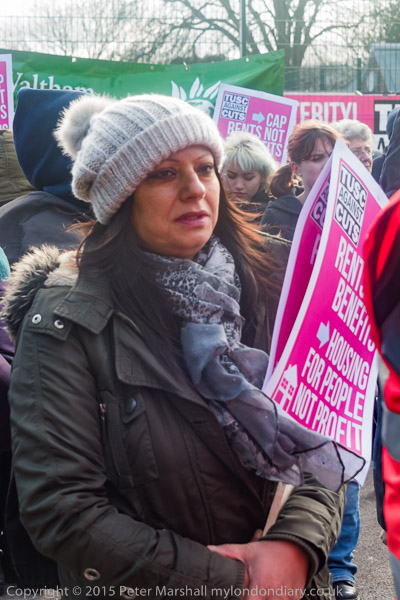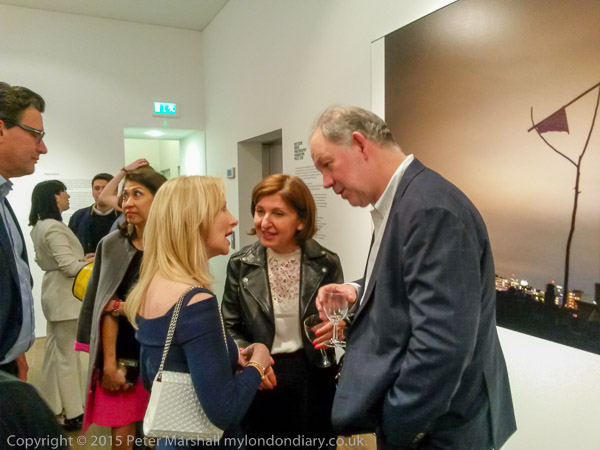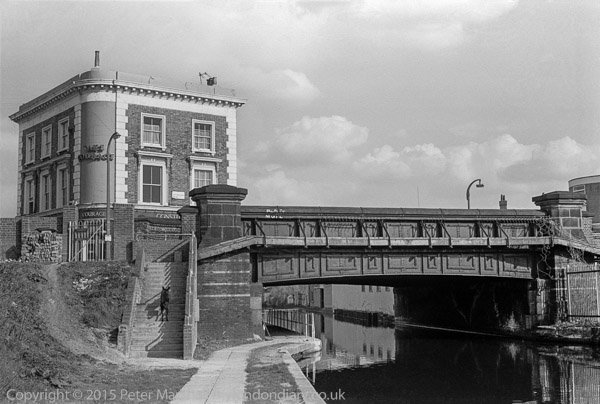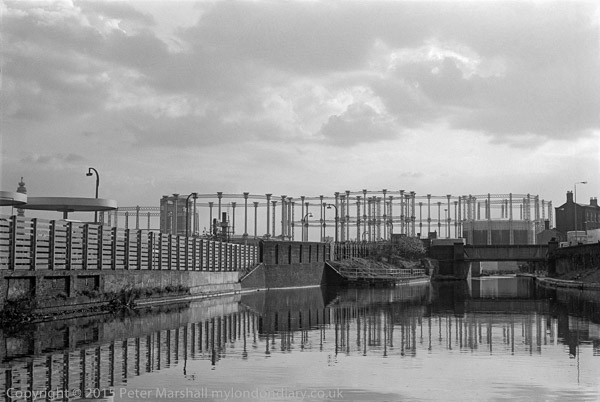The so-called ‘museum’ dedicated to Jack the Ripper in Cable St – a tacky attraction for the strong-stomached tourist lacking in humanity or sense – received a couple of visits in November from protesters which I photographed.
Class War were one of the first groups outraged by the shop to get organised, and I photographed their protests outside in August (here and here) as well as one organised by Fourth Wave: London Feminist Activists in October. There have been other protests that I’ve either not been able to attend or only heard about after the event – particularly those organised by local groups.

Class War were back again on a Saturday morning, several of them wearing masks showing the face of the museum owner, and stood outside the shop with their ‘Womens Death Brigade‘ banner.

It was a small but noisy protest, watched over by a couple of police officers who seemed quite amused by some of Class War’s comments. He had to go inside the shop to talk with the proprietor’s partner who was behind the counter and ask him to stop dialling 999 repeatedly as the police were already here.
He – and perhaps his assistant – were obviously unnerved by the protest, which appeared to have disturbed what otherwise would have been a rather lonely morning – the door to the shop was open until he decided to lock it, but I think there were no customers during the hour or more of protest. Clearly it doesn’t appear to be a viable business, despite quite an effort on the PR side, including some obviously false comments on online review pages, and a man who came along to complain at the protesters.

Rather more welcome was anarcho-folk singer/guitarist Cosmo, who came from Cardiff to perform some of his great songs at the event. After which Class War decided it was time time for the pub, and for once I had the time to join them, though I didn’t stay long as I needed to get home and process and file the story.

Five days later I was back at the same place for a protest with a very different feel, a candlelit vigil organised by the local Church of England and supported by the Theology centre at St George’s and London Citizens’ Whitechapel HQ as well as various women’s groups. There were one or two people present who had been there the previous Saturday, but it was a very different group, and included the great-great-great granddaughter of Catharine Eddowes , one of the Ripper’s victims.
Photographically it was considerably more challenging, and something that would have been virtually impossible on film. Using the D700 I was working by candle light at ISO 3200. It was fine for people actually holding candles, but the light from them follows the normal inverse square rule for point light sources, and away from the candles it was dismal.

A woman holds a candle as she reads from her phone about one of the victims of Jack the Ripper outside the ‘museum’ which celebrates his vile murders.
I didn’t want to use flash, partly because it would destroy the lighting effect, but also because I felt it would be inappropriate at the vigil. The 16-35mm gave me a good angle of view working close to the circle of those taking part, but even with that wide angle I had problems with depth of field. Mostly the better pictures were made using the 20mm f2.8 – that extra stop over the f4 16-35mm was really useful. I didn’t use the D810 much, and had forgotten that I’d taken it off auto-ISO, which caused problems, though a few images were fine – like that above at 1/15s, f/4.5, ISO 800, -0.3Ev, 50mm (75mm equiv.)
A photographer working for the local paper was also present, and did use flash, but he took considerably fewer pictures than me. But when the cleaner who had been working inside the closed shop came out, and was photographed, he responded by shouting ‘Don’t take my photograph!’ and lunged at the photographer, grabbing his camera and assaulting him.
Without having flash on my camera, my pictures of this event were too blurred to be of use, but I’d had a clear view of what happened from several meters away. Police jumped out of the van where they had been sitting and threatened to arrest the photographer rather than his assailant! I and others volunteered to act as witnesses, but the photographer concerned declined to press charges.

After the vigil, when those taking part walked together to the local church I did take some flash exposures. By this time I was late for dinner and had to rush off before the service began.
More text and pictures at Class War at the Ripper ‘Museum’ and Ripper ‘Museum’ Candlelit Vigil.



































